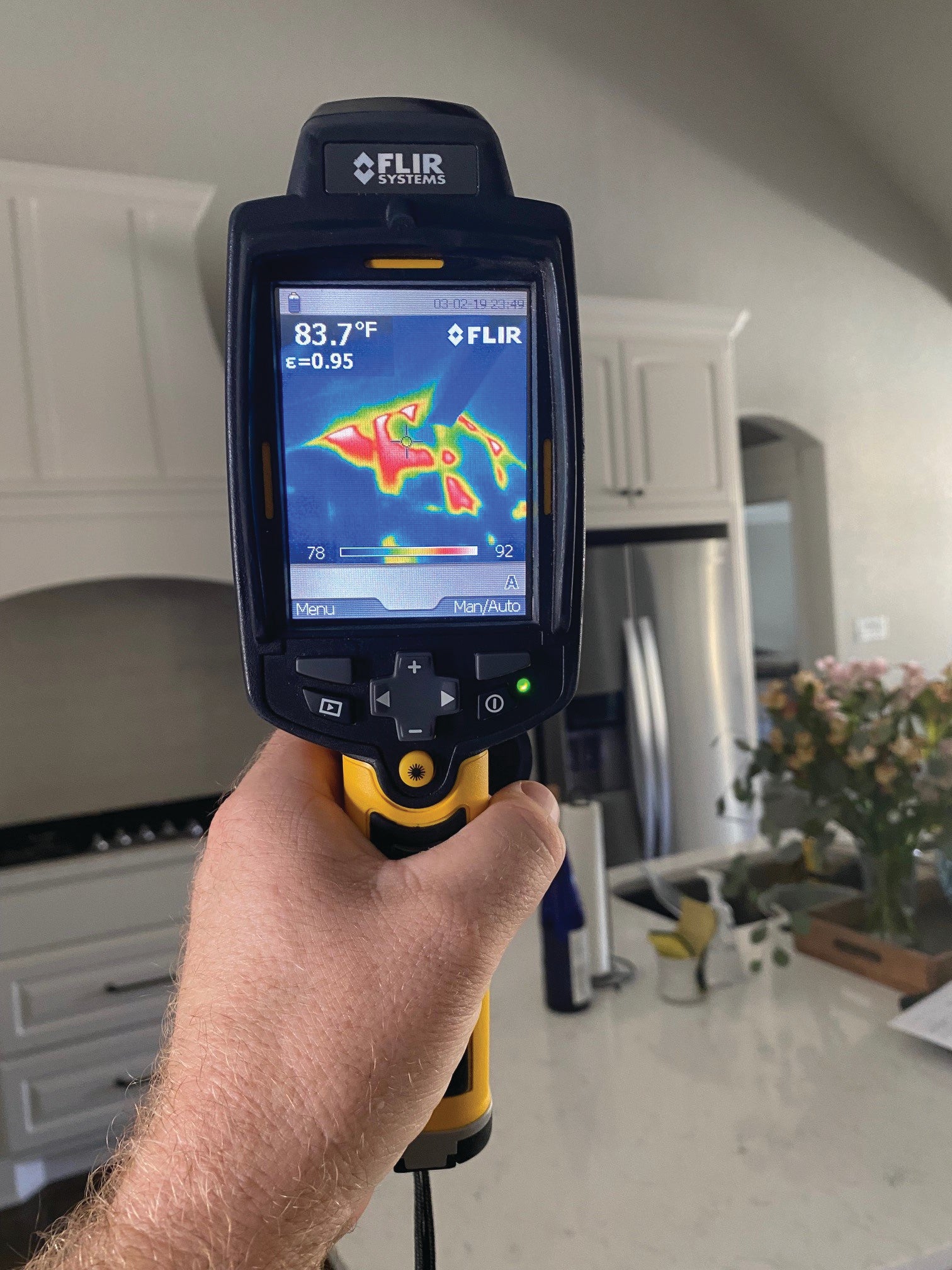Appropriate attic insulation is one of the best investments to
improve energy efficiency. Forgetting to seal gaps can leave serious holes
in the armor of your home’s energy envelope.
by
RYAN PRUITT
Adding insulation to an attic is a great way to reduce heat transfer and make a home more energy efficient. While insulation is extremely important to decrease heat gain in the summer, insulation does not stop airflow in and out of the home. Before adding insulation in the attic or performing any other energy efficient upgrades, United strongly recommends first performing air-sealing measures in the attic and throughout the home.
“Older homes are notorious for containing hidden air leaks in the attic,” said Bryce Cavazos, one of United’s energy solutions specialists. “Newer homes are normally built to higher standards and are tighter than older homes. All the little leaks we identify in older attics add up. It is not uncommon for the small leaks to add up to the equivalency of having an open window.”
Air sealing all attic bypasses paired with proper insulation can mean the difference between a comfortable and energy efficient home verses a leaky and inefficient home. An attic bypass is any hidden air way that leads from the living space of the home to the attic. Some of the most common attic bypasses seen by our energy advisors occur around recessed can lights, bathroom exhaust fans, plumbing runs, wire passages, around HVAC equipment and ductwork, top plates on walls, and open wall and floor chaises.
All of these areas should be tackled first before homeowners consider blowing insulation into their attics.
The next page features a few pictures taken by United’s energy solutions specialists that identify common trouble areas found in members’ homes during free home energy audits.
Homeowners should first tackle air leaks connected to HVAC equipment immediately before adding insulation. A leak on the return side causes the HVAC system to pull attic air into your home. Leaks on the supply side force conditioned air out of your home into your attic space where it does no good. These leaks are normally easily found during a visual inspection, but the use of a thermal imaging camera is sometimes required.
Insulation on the floor of the attic, either blown or batted, creates a heat barrier between the attic and home. Insulation slows the heat gain or loss, depending on the season, allowing the home to remain at the desired set temperature for longer. Traditional insulation is not designed to stop airflow. An unsealed attic bypass turns the insulation above it into a giant air filter, collecting dust and germs. Energy solutions specialists often spot these dark spots in light-colored insulation where years of air flow has dragged dust and debris from the attic down into the insulation, changing the insulation’s color.
United recommends having a trained professional inspect the attic for air bypasses and create a plan to air seal. For a leaky attic, a trained specialist may want to remove the existing insulation to uncover the extent of the air leaks. The cost of removing the insulation may be worth the expense if the leakage is determined to be excessive. Using cans of expanding foam on faulty areas where air escapes is the most common solution for sealing small leaks in the. For larger voids, a combination of rigid sheathing and spray foam should be used to close the gap. If only a few leaks are present, removing the insulation completely from the attic is not necessary. The insulation can simply be moved over to seal the air leak and reinstalled after the repair is made.
 Another method of air sealing the attic is to completely encapsulate the attic with spray foam. This option is more costly, so the majority of homeowners do not choose this option. Traditional insulation is approximately $1 per square foot installed, while encapsulating the attic with spray foam is approximately $4.50-$7 per square foot. The old insulation on the floor of the attic must first be removed, then spray foam is sprayed under the roof decking. A spray foamed attic should no longer be ventilated to the outdoors. All soffit vents and exhaust vents for the attic will be sealed with spray foam. The attic over the conditioned areas of the home should not be connected to the attic over porches or garages. These areas will be separated by the spray foam contractor. There are many benefits to spray foaming an attic, especially if the HVAC equipment and ductwork is located in the attic cavity. United recommends consulting with a HVAC professional before completely encapsulating an attic to ensure that the existing HVAC equipment will heat and cool the home efficiently. A spray foamed home does not require as large of a heating and cooling system. If the system is too large, then the homeowner may begin to notice moisture issues inside the home.
Another method of air sealing the attic is to completely encapsulate the attic with spray foam. This option is more costly, so the majority of homeowners do not choose this option. Traditional insulation is approximately $1 per square foot installed, while encapsulating the attic with spray foam is approximately $4.50-$7 per square foot. The old insulation on the floor of the attic must first be removed, then spray foam is sprayed under the roof decking. A spray foamed attic should no longer be ventilated to the outdoors. All soffit vents and exhaust vents for the attic will be sealed with spray foam. The attic over the conditioned areas of the home should not be connected to the attic over porches or garages. These areas will be separated by the spray foam contractor. There are many benefits to spray foaming an attic, especially if the HVAC equipment and ductwork is located in the attic cavity. United recommends consulting with a HVAC professional before completely encapsulating an attic to ensure that the existing HVAC equipment will heat and cool the home efficiently. A spray foamed home does not require as large of a heating and cooling system. If the system is too large, then the homeowner may begin to notice moisture issues inside the home.
United Cooperative Service’s mission is to provide exceptional service and value to members by researching and investigation ways to help members save on usage. Whether a DIY member or a member hiring a trained professional to air seal the attic space, United is here to help. United offers free home energy audits to help identify leaky areas and also provides a multitude of rebates to help with energy efficiency improvements around the home.
To learn more about United’s rebate program or free home energy audits visit our website at www.ucs.net, or call your local office to speak with one of United’s Energy Solution’s Specialists. An investment in air sealing can provide dividends for years to come.


